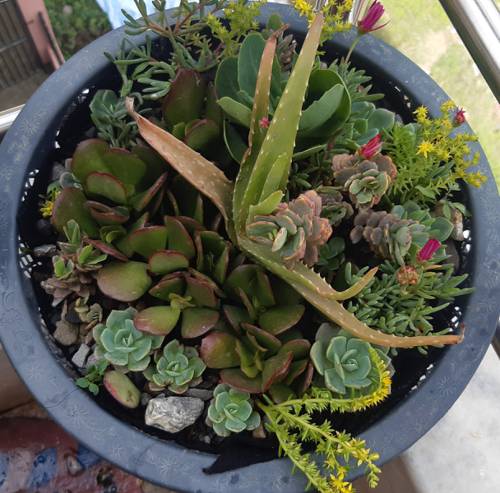
FAQ About Indoor Plant Nutrient Absorption

How do indoor plants absorb nutrients?
Indoor plants primarily absorb nutrients through their roots from the soil. The roots take in water and nutrients, such as nitrogen, phosphorus, and potassium, in solution form. Additionally, leaves can absorb some nutrients, especially trace elements, through their stomata, although this is less common than root uptake.

What role do roots play in nutrient absorption for indoor plants?
Roots are essential for nutrient absorption in indoor plants. They grow through the soil and use root hairs to increase surface area, maximizing nutrient and water uptake. The roots absorb nutrients dissolved in water directly from the soil. Some plants also engage in symbiotic relationships with mycorrhizal fungi, which assist in nutrient absorption.

Can indoor plant leaves absorb nutrients?
Yes, indoor plant leaves can absorb some nutrients, but this is less common compared to root absorption. Foliar feeding, a method of applying liquid fertilizer directly to plant leaves, can help deliver trace elements and micronutrients directly to the plant. However, it should be done carefully to avoid leaf burn and is not suitable for all plant species.

Why is it important to understand nutrient absorption in indoor plants?
Understanding nutrient absorption in indoor plants is crucial for ensuring their healthy growth and development. By knowing how plants absorb nutrients, gardeners can provide appropriate care, such as proper fertilization, watering schedules, and soil quality management, which directly impact plant health and yield.

What nutrients are most important for indoor plants?
The most critical nutrients for indoor plants are macronutrients such as nitrogen (N), phosphorus (P), and potassium (K). These nutrients are essential for plant growth, flowering, and overall health. Additionally, micronutrients like iron, zinc, and magnesium are vital, albeit required in smaller quantities, for various physiological functions.

Can soil affect nutrient absorption in indoor plants?
Yes, soil quality significantly affects nutrient absorption in indoor plants. The soil must have the right pH level, nutrients, and texture to facilitate optimal nutrient uptake. Poor soil conditions can lead to nutrient deficiencies or toxicity, affecting plant health negatively.

How do different plant varieties have specific nutrient uptake methods?
Different plant varieties have evolved specific methods for nutrient uptake based on their natural habitats and growth conditions. For example, epiphytic plants like orchids have aerial roots that absorb moisture and nutrients from the air, while terrestrial plants rely on root systems within the soil. Adaptations like these optimize nutrient absorption based on environmental availability.

What is the role of mycorrhizal fungi in nutrient absorption for indoor plants?
Mycorrhizal fungi form symbiotic relationships with plant roots, aiding in nutrient absorption, particularly phosphorus. These fungi extend the root area through a network of hyphae, allowing the plant to access more nutrients and water from the soil. This relationship can improve plant health and growth significantly.

How does pH level affect nutrient absorption in indoor plants?
The pH level of soil affects nutrient availability and absorption in indoor plants. Most nutrients are available to plants when the soil pH is between 6-7. Outside this range, certain nutrients can become unavailable or toxic, affecting plant growth. Monitoring and adjusting soil pH can help optimize nutrient uptake.

Can overfertilization harm indoor plants?
Yes, overfertilization can harm indoor plants by causing nutrient burn, which manifests as brown or burnt leaf edges. Excess fertilizer can lead to an imbalance in soil nutrient levels, reducing the plant's ability to absorb water and nutrients effectively. It's important to follow recommended fertilizer guidelines and only apply when necessary.

What are the signs of nutrient deficiency in indoor plants?
Signs of nutrient deficiency in indoor plants include yellowing leaves, stunted growth, poor flowering, and weak stems. Different deficiencies present distinct symptoms; for example, nitrogen deficiency often results in pale or yellow leaves, while potassium deficiency may cause leaf edges to become scorched.

How can you improve nutrient absorption in indoor plants?
To improve nutrient absorption in indoor plants, ensure they are planted in good quality soil with the right pH level. Regularly assess the need for fertilization and use appropriate types of fertilizers. Additionally, maintaining optimal watering schedules and ensuring proper light conditions can also enhance nutrient uptake.

Are there natural ways to enhance nutrient absorption in indoor plants?
Yes, there are natural ways to enhance nutrient absorption. Composting and using organic fertilizers can improve soil quality and provide essential nutrients. Introducing mycorrhizal fungi and beneficial bacteria into the soil can also aid in nutrient uptake indirectly. These methods promote a healthy soil ecosystem that supports plant growth.

What is foliar feeding and when should it be used?
Foliar feeding involves spraying nutrients directly onto the plant leaves. It is typically used when soil nutrient uptake is compromised or to quickly correct micronutrient deficiencies. Foliar feeding is most effective when applied in the morning or late afternoon to avoid leaf burn from direct sunlight.

What common misconceptions exist about indoor plant nutrient absorption?
A common misconception is that more fertilizer always equates to healthier plants. In reality, overfertilization can severely damage plants. Another myth is that all plants absorb nutrients the same way, while in fact, different species have specialized mechanisms adapted to their environments.

Do hydroponic systems change how indoor plants absorb nutrients?
Yes, in hydroponic systems, plants absorb nutrients directly from a nutrient solution instead of soil. The roots are immersed in or periodically exposed to a liquid solution that contains essential nutrients, which allows for more controlled and efficient nutrient uptake.

How does light influence nutrient absorption in indoor plants?
Light plays a critical role in photosynthesis, which provides energy for nutrient absorption and assimilation. Adequate light allows plants to process absorbed nutrients efficiently, promoting healthy growth. Lack of light can lead to reduced nutrient uptake and stunted growth in indoor plants.

What is nutrient burn, and how can it be prevented?
Nutrient burn occurs when plants are exposed to excessive nutrients, especially from overfertilization, leading to burnt or brown leaf tips and edges. To prevent it, follow fertilizer instructions, apply the right amounts, and ensure good quality soil with proper drainage to avoid nutrient buildup.

Can indoor plants be overwatered and how does this affect nutrient absorption?
Yes, overwatering can negatively impact nutrient absorption as it can lead to root rot, reducing the plant's ability to take up nutrients effectively. It also causes nutrients to leach away from the soil, leading to deficiencies. It’s vital to maintain a balanced watering schedule.

How do temperature fluctuations affect nutrient absorption in indoor plants?
Temperature fluctuations can stress plants and affect their ability to absorb nutrients. Extreme temperatures, either too hot or too cold, can inhibit root function and nutrient uptake. Consistent, optimal temperature ranges are crucial for maintaining healthy indoor plant growth.
